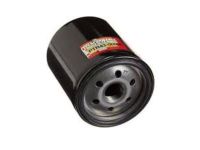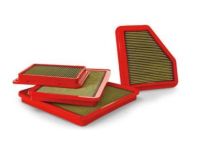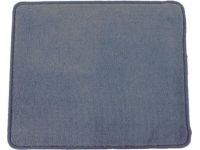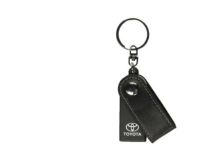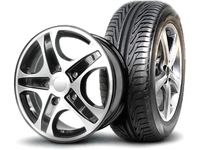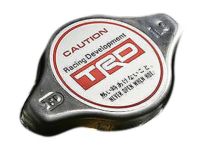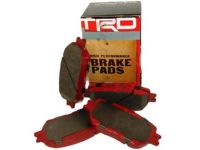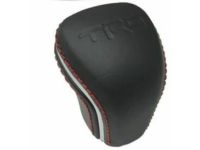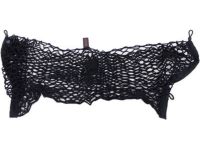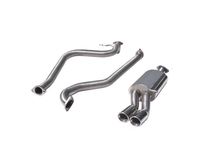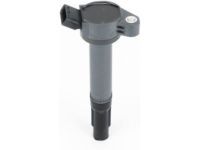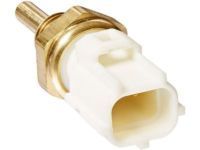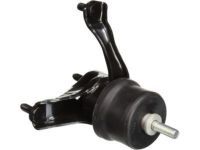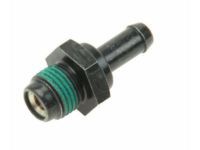

Why choose ToyotaPartsDeal
- High-Grade Parts
The best site to buy Toyota Camry genuine parts for years has been ToyotaPartsDeal.com. We're the best online store for genuine parts. Toyota Camry parts you could ever need are available here at the finest quality and best value on the web that will have your vehicle performing past its limits.
- Value For Money
What makes us the best choice for OEM Toyota Camry parts? You get tremendous savings because our goal is to offer unbeatable prices. At ToyotaPartsDeal.com, Our products offer the same performance and reliability as their OEM counterparts without having to break your wallet.
- Quick Delivery
Everything you need for routine maintenance and repair can be found in our complete Toyota Camry parts catalog. Having the best OEM parts inventory available, the parts for your vehicle will arrive fast no matter your location in the nation. You'll be back on the open road before you know it.
Popular Genuine Toyota Camry Parts
- Power Train/Chassis Parts View More >
- Body Parts View More >
- Engine/Fuel/Tool Parts View More >
- Electrical Parts View More >
Shop Genuine Toyota Camry Parts with ToyotaPartsDeal.com
Toyota Camry was a compact car and mid-size car manufactured by Toyota since 1982. The first Toyota Camry was introduced in March 1982. It has been produced through twelve generations. It is still making a profit for Toyota. The tenth generation Toyota Camry (2006-2011) was unveiled at the 2006 North American International Auto Show along with a hybrid version. It went on sale in March 2006 for the 2007 model year. It was powered by 2.4 L 158 hp 2AZ-FE inline 4-cylinder, 3.5 L 268 hp 2GR-FE inline 4-cylinder, 2.5 L 2AR-FE inline 4-cylinder, and 2.5 L 169 hp engines equipped with a 5-speed manual and a 6-speed automatic transmission. It offered base, LE, XLE, and SE trims. The eleventh generation Toyota Camry (2011-present) was introduced on 23 August 2011. There are several trim levels available including the L, LE, SE, XLE, SE V6, XLE V6, Hybrid LE, Hybrid XLE, and Hybrid SE. It now has three engine options a 2.5 L 200 hp 4-cylinder engine, a 2.5 L 178 hp 4-cylinder engine with 170 lb. of torque, and a 3.5 L 268 hp V6 engine with 248 lb. of torque. All engines are equipped with a 6-speed automatic transmission.
Despite Toyota Camry's long history, it still experiences common issues due to wear and tear. Excessive oil consumption is a concern for Camry owners, who also notice slow acceleration, engine misfiring, difficulty starting, reduced performance, and metallic sounds. To address these issues, check components like the spark plug, air filter, oil filter, and intake manifold gasket, which often contribute to excessive oil consumption. Another prevalent problem is suspension system failure, characterized by sluggish vehicle handling, rattling or squeaking noises, bottoming out, excessive road noise, grinding noises when turning, and visible damage to front tires and brakes. Inspect the sway bar bushing and coil spring insulator for any issues. Additionally, pay attention to other essential parts such as seat belts, which need replacement after accidents, brake pad sets, and brake drums for proper braking action. Cabin air filters ensure a fresh and healthy driving environment, while wiper blades maintain clear driving vision. These parts also deserve proper maintenance.
In terms of quality, OEM parts emerge as the premier choice. These components are directly manufactured by Toyota, adhering to stringent factory guidelines, and are subjected to rigorous quality control procedures during production. If you are looking for affordable high-quality OEM Toyota Camry parts, then you have come to the prime place. Our website provides a large amount of genuine Toyota Camry parts at the lowest prices. All our parts come backed with the manufacturer's warranty.
Toyota Camry Parts Questions & Answers
- Q: How to disconnect the cable from the negative battery terminal and access the ignition coils on Toyota Camry?A: To disconnect the cable from the negative battery terminal, start by removing the engine cover on 2009 and earlier models by taking off the mounting fasteners and lifting it off. On 2010 and later models, lift the engine cover up from the rear and then the front, removing it from the mounting pins. For V6 engines, pry the engine cover up from the rear and remove it from the mounting pins. To access the rear ignition coils, remove the upper intake manifold. Each ignition coil/igniter assembly is secured by one bolt, so unscrew the bolt, disconnect the electrical connector, and pull the coil/igniter assembly straight up using a twisting motion. The individual ignition coil boot directly mounts over each spark plug. Installation is the reverse of removal.
- Q: How to replace the Coolant Temperature Sensor for Toyota Camry?A: To replace the Coolant Temperature Sensor, start by ensuring the ignition key is in the OFF position. Then, remove the engine covers and drain approximately one gallon of coolant from the cooling system. Next, remove the air filter housing. Disconnect the electrical connector and unscrew the sensor. For four-cylinder models, the ECT sensor is located on the left end of the cylinder head, while for V6 models, it is located on the left end of the engine on the coolant crossover between the cylinder heads. Before installing the new sensor, wrap its threads with Teflon sealing tape to prevent leakage and thread corrosion. Finally, carefully handle the coolant sensor during installation, as damage to it can affect the operation of the entire fuel injection system.
- Q: What is the purpose and operation of the Active Control Engine Mount and Diverter Valve on Toyota Camry?A: The Active Control Engine Mount is a component that generates vibrations to cancel out engine vibration and reduce noise at idle. It operates using a Diverter Valve that utilizes engine vacuum to vibrate a diaphragm within the mount. This vibration is then transferred to a liquid inside the mount, which in turn transfers the vibration to the mount's rubber pad, effectively canceling out the engine vibration. To replace the VSV, the two vacuum hoses and the large hose connected to it must be disconnected and labeled for proper reassembly. The valve's mounting bolt and electrical connector are then removed, followed by the disconnection of the remaining hose. The installation process is the reverse of the removal steps.
- Q: What is the Role and Importance of the Positive Crankcase Ventilation (PCV) System and PCV Valve in Reducing Hydrocarbon Emissions on Toyota Camry?A: The Positive Crankcase Ventilation (PCV) system reduces hydrocarbon emissions by scavenging crankcase vapors. It circulates fresh air from the air cleaner through the crankcase, mixing it with blow-by gases. The mixture is rerouted through a PCV valve to the intake manifold. The PCV valve restricts flow when intake manifold vacuum is high, maintaining idle quality. In abnormal conditions, excessive blow-by gases flow back through the crankcase vent tube into the air cleaner for normal combustion. The PCV system consists of the PCV valve, blow-by filter, and vacuum hoses connecting these components to the engine. Regularly checking and replacing the PCV valve is important.


































